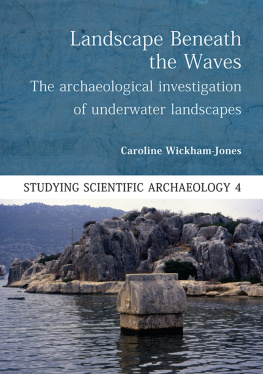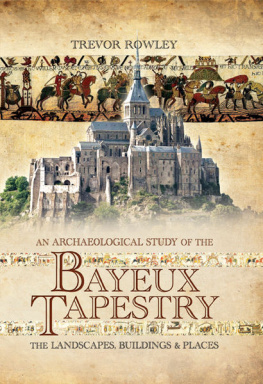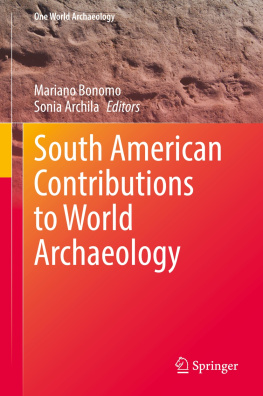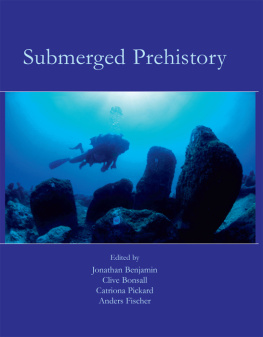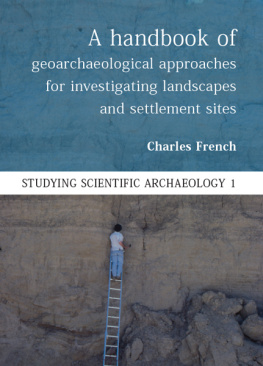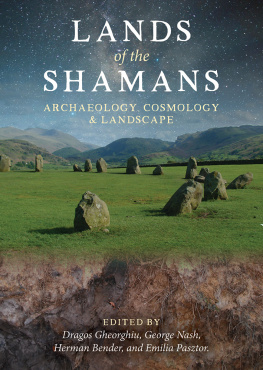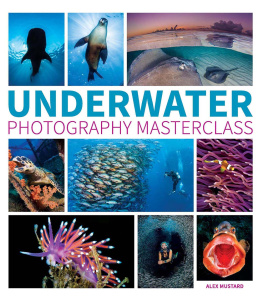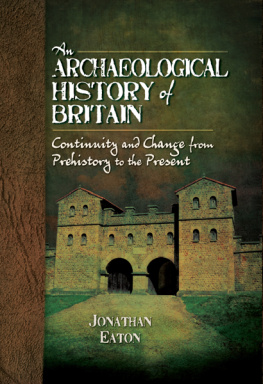Pagebreaks of the print version

L ANDSCAPE B ENEATH THE W AVES
Studying Scientific Archaeology
Studying Scientific Archaeology is a new series of titles from Oxbow Books. The series will produce books on a wide variety of scientific topics in archaeology aimed at students at all levels. These will examine the methods, procedures and reasoning behind various scientific approaches to archaeological data and present case studies or extended examples to demonstrate how data is used and interpretations are arrived at.
In particular we aim that they should demonstrate how scientific analyses contribute to our wider understanding of past human behaviour, technology and economy. The series title reflects an inclusivity in the volumes in the sense of encouraging readers in practical research rather than just presenting collected papers as statements of work completed.
Our aim is that these titles will come to feature as recommended reading for university courses, providing a sound basis for the appreciation and application of scientific archaeology.
Already published in this series
French, C. 2015. A handbook of geoarchaeological approaches for investigating landscapes and settlement sites
Hardy, K. & Kubiak-Martens, L. (eds), 2016. Wild Harvest: plants in the hominin and preagrarian human worlds
Allen, M. J. 2017. Molluscs in Archaeology: methods, approaches and applications
Wickham-Jones, C. 2018. Landscape Beneath the Waves: the archaeological investigation of underwater landscapes
SERIES EDITORS: Michael J. Allen and Terry OConnor
S TUDYING S CIENTIFIC A RCHAEOLOGY N O . 4
Landscape Beneath the Waves: the archaeological investigation of underwater landscapes
Caroline Wickham-Jones
Published in the United Kingdom in 2018 by
OXBOW BOOKS
The Old Music Hall, 106-108 Cowley Road, Oxford, OX4 1JE
and in the United States by
OXBOW BOOKS
1950 Lawrence Road, Havertown, PA 19083
Oxbow Books and the author 2018
Paperback Edition: ISBN 978-1-78925-072-5
Digital Edition: ISBN 978-1-78925-073-2 (epub)
Kindle Edition: ISBN 978-1-78925-074-9 (mobi)
A CIP record for this book is available from the British Library
Library of Congress Control Number: 2018956004
All rights reserved. No part of this book may be reproduced or transmitted in any form or by any means, electronic or mechanical including photocopying, recording or by any information storage and retrieval system, without permission from the publisher in writing.
For a complete list of Oxbow titles, please contact:
UNITED KINGDOM
Oxbow Books
Telephone (01865) 241249
Email:
www.oxbowbooks.com
UNITED STATES OF AMERICA
Oxbow Books
Telephone (800) 791-9354, Fax (610) 853-9146
Email:
www.casemateacademic.com/oxbow
Oxbow Books is part of the Casemate Group
Front cover: A partially submerged Lycian sarcophagus at Kekova, the site of ancient Simena, southeast Turkey. Image: zdoan Archive.
Back cover: Left: Divers undertaking investigation and coring of the seabed. Image: Richard Bates, University of St Andrews. Right: Coring in the Bay of Firth, Orkney. Image: Richard Bates, University of St Andrews

The author during fieldwork in Orkney. Her original archaeological training did not prepare her for the necessity of immersion suits such as this (note the snow on the hills in the background)
I would like to dedicate this book, with thanks, to all those who taught me archaeology in the 1970s:
Stuart Piggott;
Trevor Watkins;
Roger Mercer;
David Clarke.
How the world has changed.
Acknowledgements
This book has been a long time coming and I must first of all thank my publishers, and especially Mike Allen and Julie Gardiner, for their forbearance and patience. Secondly, I would like to thank those who, knowingly and unknowingly, have helped me on my journey to explore the submerged landscapes of the world. So many wet and windy afternoons trying to take sediment cores, so many evenings spent discussing the minutiae of a seismic profile, so much time spent worrying about what it all means in human terms. In particular the Rising Tide Project research team: Martin Bates; Richard Bates; Ali Dawson; Sue Dawson; Dei Huws; and Nigel Nayling have all provided much explanation, helped out with illustrations, put up with lengthy discussion, not to mention my avoidance of bog-hopping.
John Howe and his team from the Scottish Association for Marine Science brought Freya the AUV to Orkney for her first (and hopefully not last) visit. Mark Edmonds guided me into my conclusions (over a nice bottle of red wine). Leo Sucharyna Thomas sprang into action to help out with a high-resolution ABM image (). Denis Bates gave much last-minute help with other figures. Nic Flemming (besides being inspirational and encouraging), gave me the idea for Figure 2. Richard Bates, Ann Clarke, Sue Dawson, Ali Dawson, Jen Harland, Jill Harden, and Terry OConnor all kindly acted as guinea pigs and read through the text many thanks for your patience and helpful comments. Liz Gilmore kindly applied her eagle eye to spotting my many inconsistencies and errors.
Several of the smaller case studies and examples cited in the volume relate to the Rising Tide Project in Orkney. This multi-authored and interdisciplinary project is the research with which I have been personally involved in recent years, so that it has provided an easy source of photos and material (though I have made sure that a wide range of material from around the UK and elsewhere has also been used). Since the end of the last Ice Age, relative sea-level around the archipelago of Orkney, in the north of Scotland, has been rising, with the result that a considerable submerged landscape exists around the islands. As this period of rising relative sea-level coincides with the timespan of human settlement, the Rising Tide Project was set up in 2005 with the aim of quantifying landscape inundation around the islands and investigating the impact of this on both the prehistoric communities who lived there and the understanding and management of the archaeological resource today. This work has been funded by a mix of private and research grants and, in this way, it has been possible to tailor research so that different aspects of the objectives could be studied as knowledge was acquired. Though the waters around Orkney are known for their high energy potential meaning that archaeological preservation might be considered minimal, in practice numerous sheltered bays and inlets mean that there is considerable scope for investigation. For this flexibility of research, I would like, in particular, to thank Historic Environment Scotland, The Leverhulme Trust (whose assistance allowed valuable time to research and reflect), Crown Estates Marine Stewardship Fund, NGS Waitt Trust, Carnegie Trust, the Royal Archaeological Institute, The Russell Trust, Scapa Flow Landscape Partnership and the Heritage Lottery Fund, Orkney Islands Council, Orkney Archaeology Society and the Society of Antiquaries of Scotland, as well as various private contributions.
Illustration acknowledgements
The compilation of figures for a volume such as this is not undertaken lightly. It requires collaboration and generosity from around the world. My heartfelt thanks to the many colleagues and institutions who have contributed material from their research and their collections or helped me to find suitable figures: Luc Amkreutz, .

